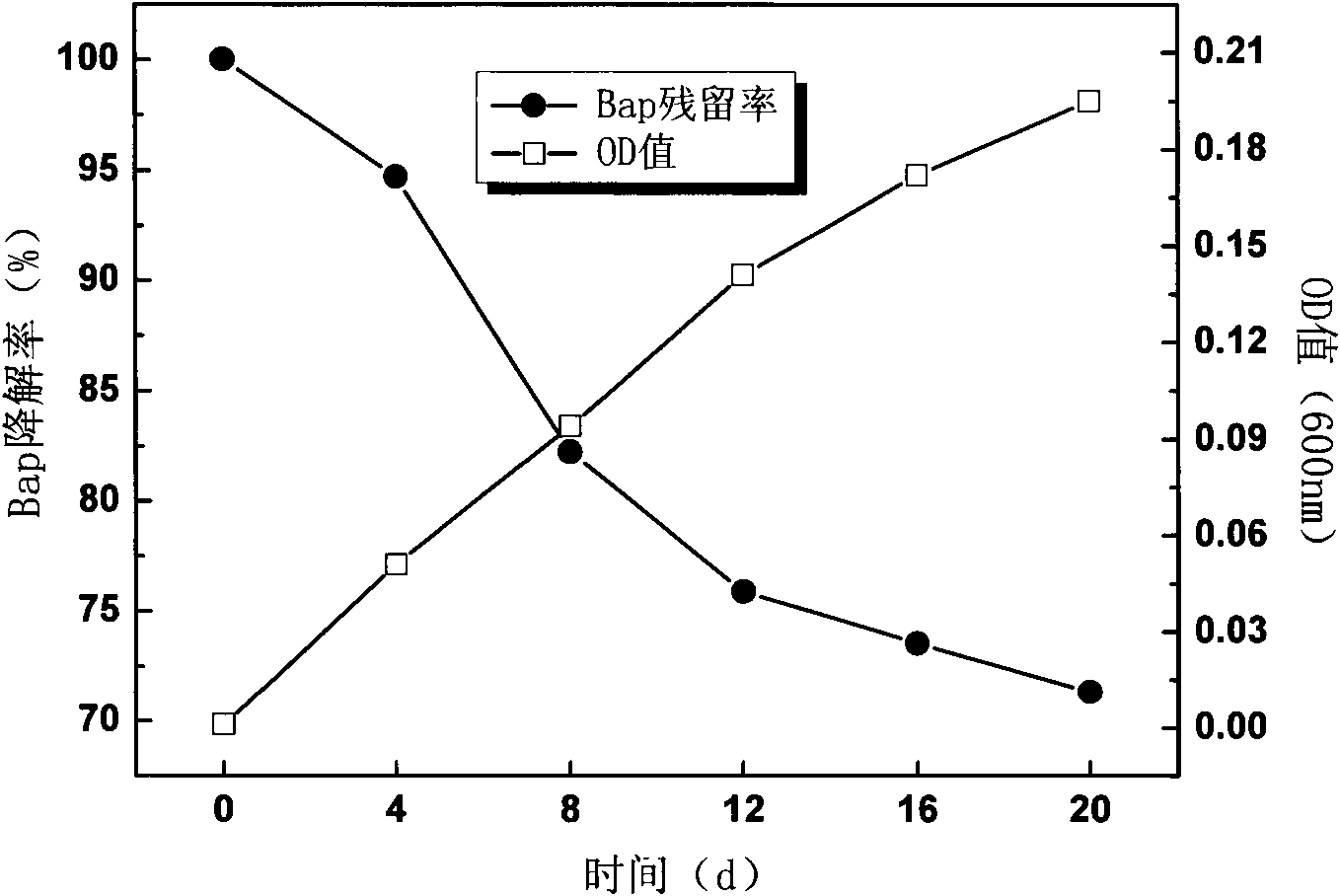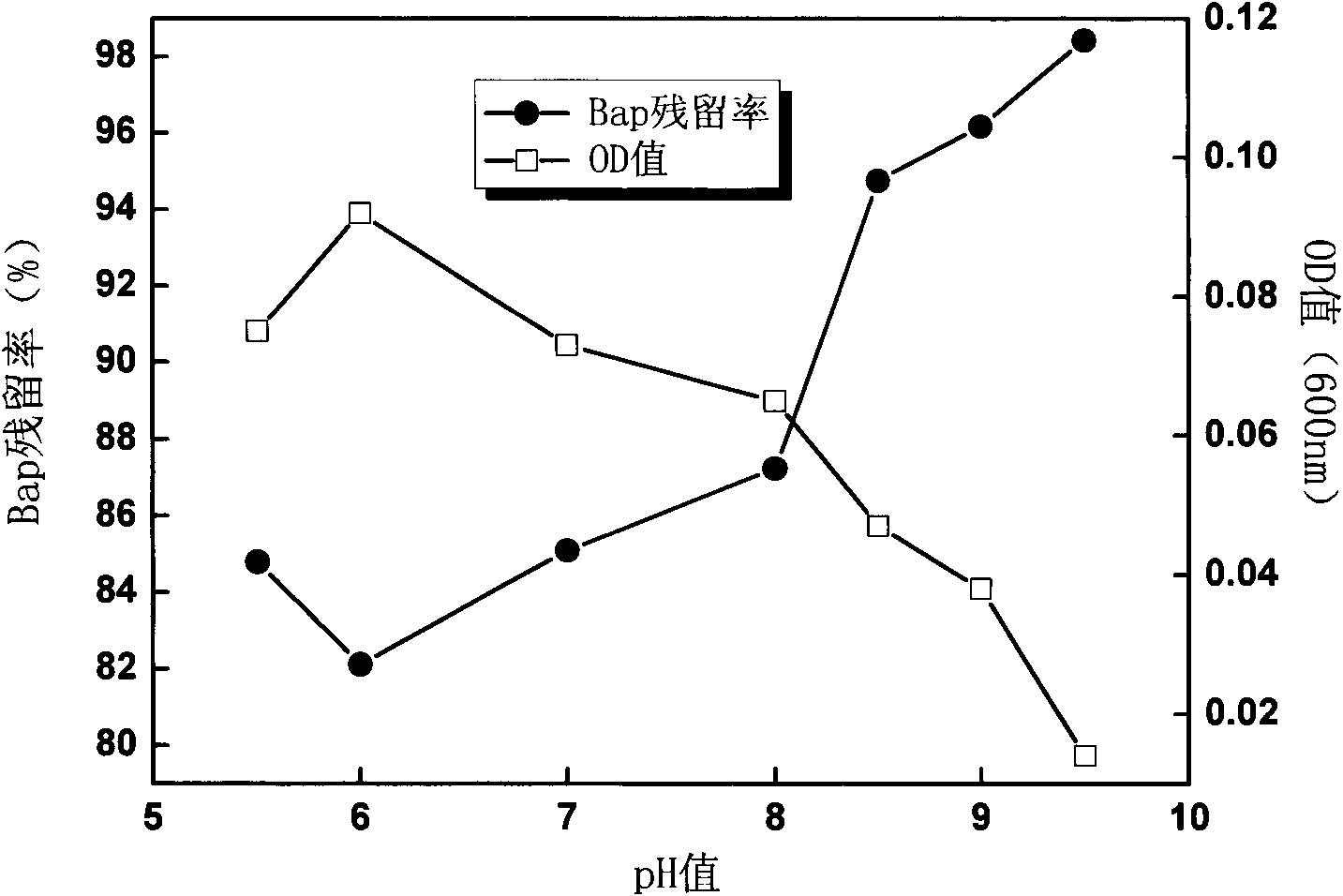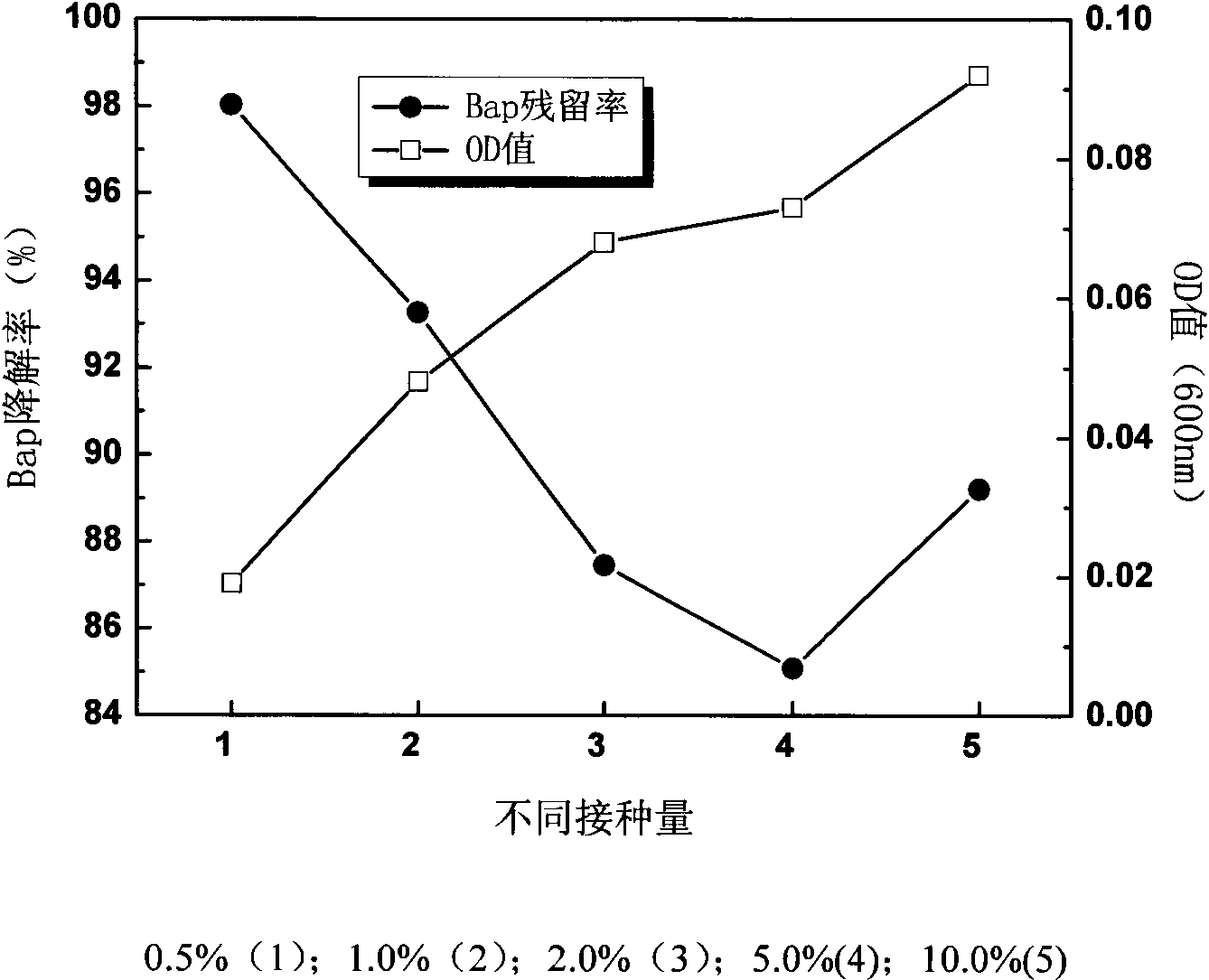Acinetobacter sp.Bap30 capable of effectively degrading benzo(a)pyrene and application thereof
A technology of benzo and bacilli, which is applied in the field of benzo[a]pyrene high-efficiency degradation strains, can solve the problems of low biodegradation efficiency of benzo[a]pyrene, and achieve the effect of improving the degradation rate
- Summary
- Abstract
- Description
- Claims
- Application Information
AI Technical Summary
Problems solved by technology
Method used
Image
Examples
Embodiment 1
[0057] Example 1: The separation and purification method of bacterial strain Acinetobacter sp.Bap30 and the performance of degrading pyrene
[0058] 1. Separation and purification method for efficiently degrading benzo[a]pyrene strain Bap30
[0059] The method has the following steps:
[0060] 1. Dissolve 10 mg of benzo[a]pyrene in 50 mL of acetone solution so that the final concentration of benzo[a]pyrene is 200 mg / L;
[0061] 2. Take an appropriate amount of absorbent cotton, soak it in the acetone solution of the above-mentioned benzo[a]pyrene, and place it overnight;
[0062] 3. Wrap the absorbent cotton with a net bag the next day, tie the net bag with a strong long rope, and throw it into the sewer of the family area of the East Campus of China Agricultural University;
[0063] 4. After standing for 21 days, take out the absorbent cotton and place it in a 250mL Erlenmeyer flask with 50mL acclimation medium. The active ingredient of the acclimatization medium is (NH ...
Embodiment 2
[0072] Example 2: Effects of different initial pH values on the growth and degradation of benzo[a]pyrene of bacterial strain Acinetobacter sp.Bap30
[0073] Regulate inorganic salt medium (the composition of this medium is: (NH 4 ) 2 SO 4 1g, K 2 HPO 4 2g, MgSO 4 ·7H 2 O 0.5g, NaCl 0.1g, FeCl 3 0.5g, CaCl 2 0.5g, benzo[a]pyrene 0.04g, distilled water 1000mL), the pH values are 5.5, 6.0, 7.0, 8.0, 9.0, 9.5 respectively, the initial concentration of benzo[a]pyrene is 40mg / L, and the inoculum size is 5% (V / V), 160r / min, shake culture at 37°C for 7 days, measure the OD value of bacteria and the residual rate of benzo[a]pyrene, the results are shown in figure 2 .
[0074] Depend on figure 2 It can be seen that when the pH is 6.0, the degrading bacteria have the strongest degradation effect on benzo[a]pyrene, and the degradation rate is 17.89% after 7 days. When the pH is 9.5, the degradation rate is greatly inhibited, only 1.57% , indicating that the strain is ...
Embodiment 3
[0075] Embodiment 3: the influence of different inoculum sizes on the growth of bacterial strain and degradation benzo[a]pyrene
[0076] In the inorganic salt culture solution (the composition of this culture medium is: (NH 4 ) 2 SO 4 1g, K 2 HPO 4 2g, MgSO 4 ·7H 2 O 0.5g, NaCl 0.1g, FeCl 3 0.5g, CaCl 2 0.5g, benzo[a]pyrene 0.04g, distilled water 1000mL, pH value 7.0), the residual rate of benzo[a]pyrene after 7 days was 98.03%, 93.27%, 87.46%, 85.09% and 89.21% respectively ( See image 3 ). Depend on image 3 It can be seen that within a certain range, the larger the inoculum size, the higher the bacterial density, and the higher the degradation rate of the strain, but the larger the inoculum size, the better. low rate.
PUM
 Login to View More
Login to View More Abstract
Description
Claims
Application Information
 Login to View More
Login to View More - R&D
- Intellectual Property
- Life Sciences
- Materials
- Tech Scout
- Unparalleled Data Quality
- Higher Quality Content
- 60% Fewer Hallucinations
Browse by: Latest US Patents, China's latest patents, Technical Efficacy Thesaurus, Application Domain, Technology Topic, Popular Technical Reports.
© 2025 PatSnap. All rights reserved.Legal|Privacy policy|Modern Slavery Act Transparency Statement|Sitemap|About US| Contact US: help@patsnap.com



